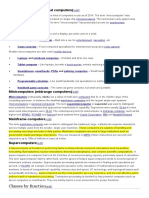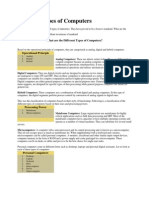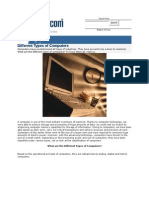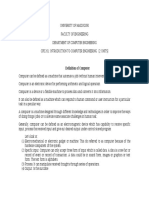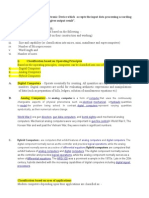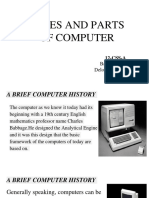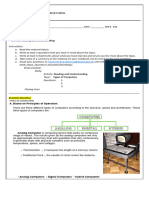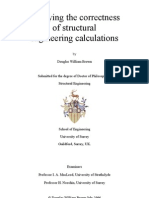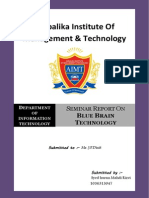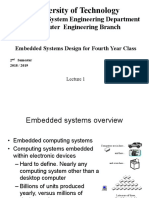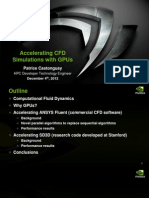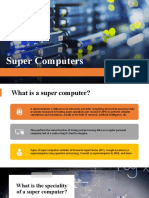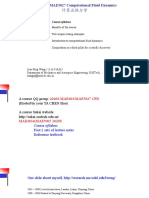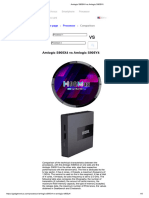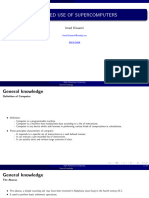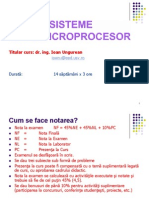CLASSIFICATION OF COMPUTERS
Computers can be classified, or typed, many ways. Some common classifications are
summarized below.
Classes by size
Microcomputers (personal computers)
Microcomputers are the most common kind of computers used by people today, whether in
a workplace, at school or on the desk at home. The term “microcomputer” was introduced
with the advent of single chip microprocessors. The term "microcomputer" itself is now
practically an anachronism.
These computers include:
Desktop computers – A case and a display, put under and on a desk.
In-car computers (“carputers”) – Built into a car, for entertainment, navigation, etc.
Game consoles – Fixed computers specialized for entertainment purposes (video
games).
A separate class is that of mobile devices:
Laptops, notebook computers and Palmtop computers – Portable and all in one
case. Varying sizes, but other than smartbooks expected to be “full” computers
without limitations.
Tablet computer – Like laptops, but with a touch-screen, sometimes entirely
replacing the physical keyboard.
Smartphones, smartbooks and PDAs (personal digital assistants) – Small handheld
computers with limited hardware.
Programmable calculator– Like small handhelds, but specialised on mathematical
work.
Handheld game consoles – The same as game consoles, but small and portable.
Minicomputers (midrange computers)
A minicomputer (colloquially, mini) is a class of multi-user computers that lies in the
middle range of the computing spectrum, in between the smallest multi-user systems
(mainframe computers) and the largest single-user systems (microcomputers or personal
computers). The contemporary term for this class of system is midrange computer, such as
the higher-end SPARC, POWER and Itanium -based systems from Oracle Corporation,
IBM and Hewlett-Packard. E.g.- Laboratory computers
http://ecampus.maseno.ac.ke
�Mainframe computers
The term mainframe computer was created to distinguish the traditional, large, institutional
computer intended to service multiple users from the smaller, single user machines. These
computers are capable of handling and processing very large amounts of data quickly.
Mainframe computers are used in large institutions such as government, banks and large
corporations. They are measured in MIPS (million instructions per second) and respond to
up to 100s of millions of users at a time.
Supercomputers
A supercomputer is focused on performing tasks involving intense numerical calculations
such as weather forecasting, fluid dynamics, nuclear simulations, theoretical astrophysics,
and complex scientific computations. A supercomputer is a computer that is at the frontline
of current processing capacity, particularly speed of calculation. The term supercomputer
itself is rather fluid, and the speed of today's supercomputers tends to become typical of
tomorrow's ordinary computer. Supercomputer processing speeds are measured in floating
point operations per second, or FLOPS. An example of a floating point operation is the
calculation of mathematical equations in real numbers. In terms of computational
capability, memory size and speed, I/O technology, and topological issues such as
bandwidth and latency, supercomputers are the most powerful, are very expensive, and not
cost-effective just to perform batch or transaction processing. Transaction processing is
handled by less powerful computers such as server computers or mainframes.
Computer
Analog Digital Hybrid
Super Mainframe Mini Micro
Computers Computers Computers Computers
Classes by function
Servers
Server usually refers to a computer that is dedicated to provide a service. For example, a
computer dedicated to a database may be called a "database server". "File servers" manage
a large collection of computer files. "Web servers" process web pages and web
applications. Many smaller servers are actually personal computers that have been
dedicated to provide services for other computers.
http://ecampus.maseno.ac.ke
�Workstations
Workstations are computers that are intended to serve one user and may contain special
hardware enhancements not found on a personal computer.
Information appliances
Information appliances are computers specially designed to perform a specific user-
friendly function—such as playing music, photography, or editing text. The term is most
commonly applied to mobile devices, though there are also portable and desktop devices of
this class.
Embedded computers
Embedded computers are computers that are a part of a machine or device. Embedded
computers generally execute a program that is stored in non-volatile memory and is only
intended to operate a specific machine or device. Embedded computers are very common.
Embedded computers are typically required to operate continuously without being reset or
rebooted, and once employed in their task the software usually cannot be modified. An
automobile may contain a number of embedded computers; however, a washing machine
and a DVD player would contain only one. The central processing units (CPUs) used in
embedded computers are often sufficient only for the computational requirements of the
specific application and may be slower and cheaper than CPUs found in a personal
computer.
http://ecampus.maseno.ac.ke

















